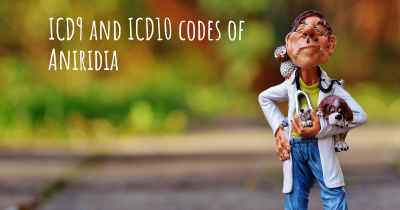What is the history of Aniridia?
When was Aniridia discovered? What is the story of this discovery? Was it coincidence or not?

Aniridia is a rare genetic disorder characterized by the partial or complete absence of the iris, the colored part of the eye. The condition affects both eyes and is present from birth. Aniridia is caused by mutations in the PAX6 gene, which plays a crucial role in eye development.
The history of Aniridia dates back to the early 19th century when it was first described by a Scottish ophthalmologist named James Ware. In 1808, Ware published a case report on a young girl who had a congenital absence of the iris. He named the condition "aniridia" derived from the Greek words "an" meaning without and "iris" referring to the colored part of the eye.
Throughout the 19th and early 20th centuries, several other cases of aniridia were reported by different ophthalmologists around the world. However, it wasn't until the mid-20th century that significant advancements were made in understanding the genetic basis of the disorder.
In the 1950s, a British geneticist named Peter S. Harper conducted extensive research on aniridia and its inheritance patterns. He discovered that aniridia follows an autosomal dominant pattern of inheritance, meaning that a person with a single copy of the mutated PAX6 gene will have the disorder. Harper's work laid the foundation for further genetic studies on aniridia.
In the 1980s, the PAX6 gene was identified as the key gene responsible for aniridia. Scientists discovered that mutations in the PAX6 gene disrupt the normal development of the eye, leading to the absence or underdevelopment of the iris. The PAX6 gene is also involved in the formation of other eye structures, such as the lens and cornea, which can contribute to additional vision problems associated with aniridia.
Since the identification of the PAX6 gene, researchers have made significant progress in understanding the molecular mechanisms underlying aniridia. They have identified various types of PAX6 mutations and their effects on eye development. This knowledge has paved the way for improved genetic testing and counseling for individuals with aniridia and their families.
Today, the management of aniridia involves a multidisciplinary approach, including regular eye examinations, corrective lenses, and surgical interventions when necessary. Additionally, advancements in gene therapy and stem cell research hold promise for potential future treatments.
In conclusion, Aniridia is a rare genetic disorder characterized by the absence of the iris. It was first described in the early 19th century and its genetic basis was discovered in the 1980s. The identification of the PAX6 gene as the key gene involved in aniridia has led to significant advancements in understanding the disorder and improving diagnostic and therapeutic approaches.








